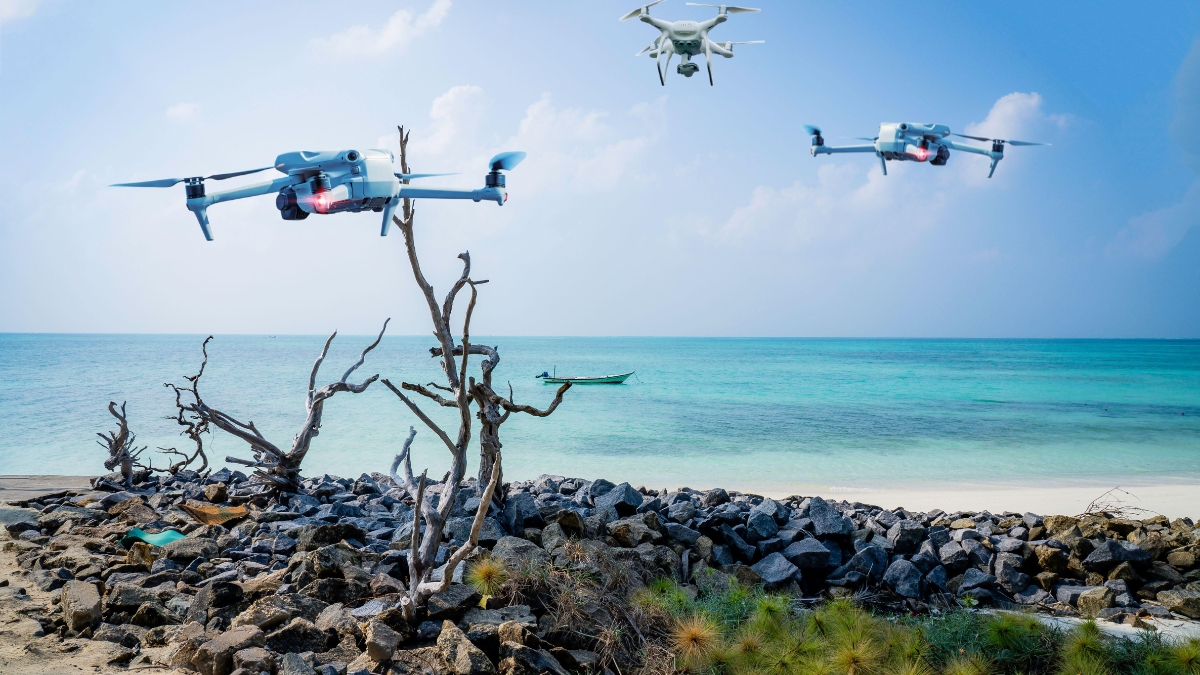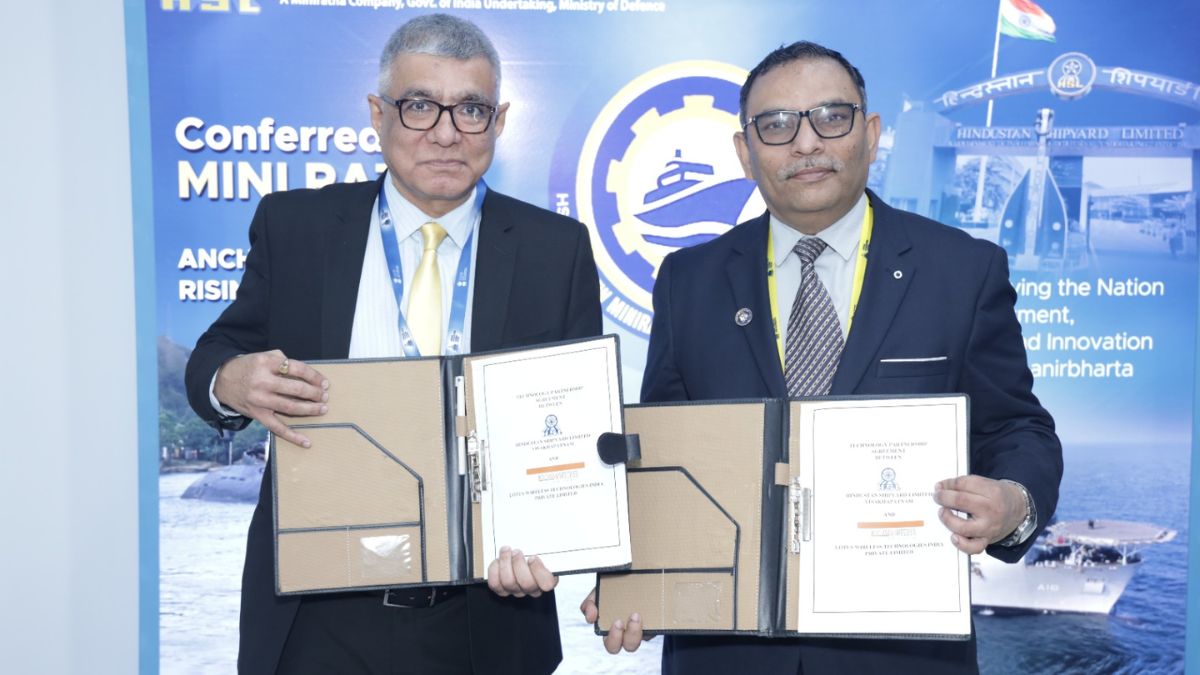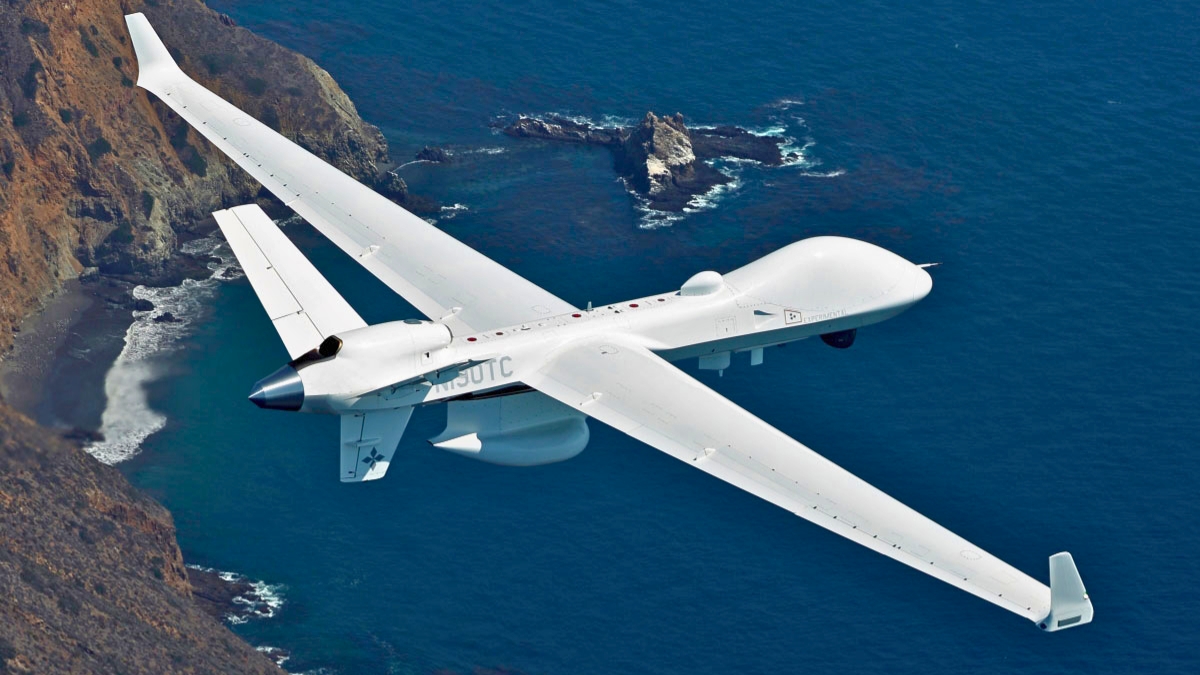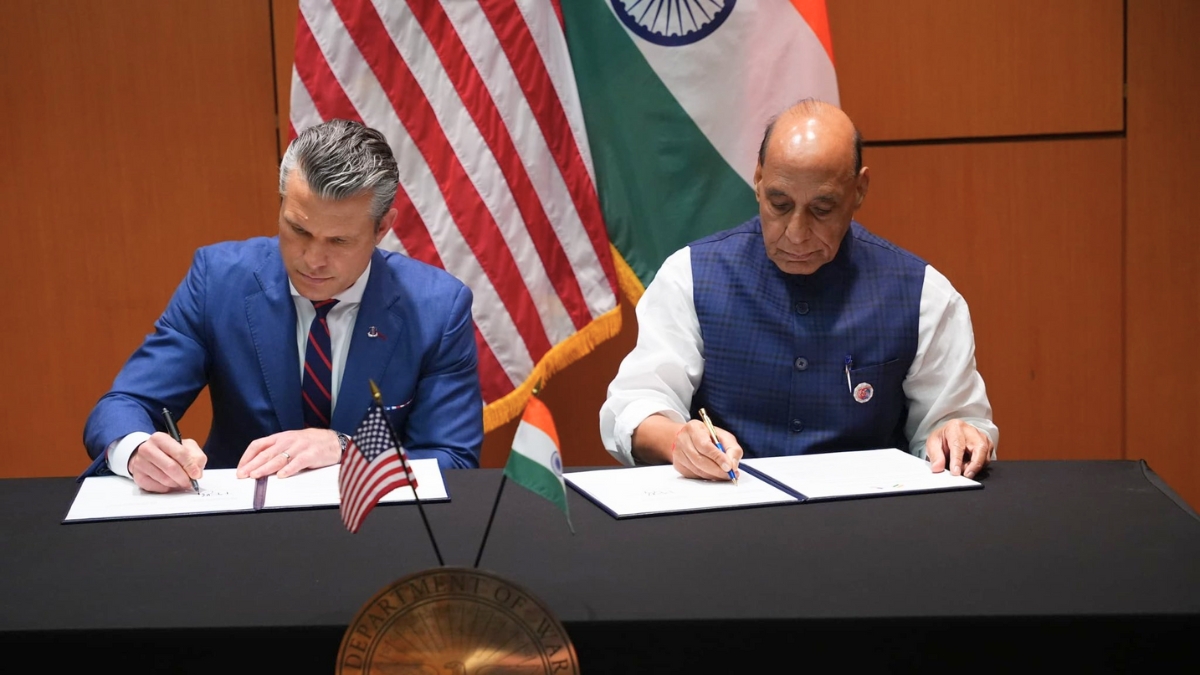IAF Eyes 500-kg Cargo Drones For Lakshadweep Expansion To Boost Island Logistics, Security

The IAF is strengthening its presence and surveillance in Lakshadweep and Minicoy. Image courtesy: RNA
The Indian Air Force (IAF) has set its sights on a new frontier in aerial logistics, under which it aims to develop indigenous cargo drones capable of carrying up to 500 kilograms over distances of 500 kilometres with an endurance of five hours. The goal is to ensure reliable cargo movement between the Indian mainland and the Lakshadweep islands.
This initiative, announced by Vice Chief of Air Staff Air Marshal Narmdeshwar Tiwari, seeks to address long-standing logistical and connectivity challenges in one of India’s most strategically significant island chains. With this, this IAF is also looking at making sure that there is good connectivity between the islands themselves.
Air Marshal Tiwari has said drones will be used on a larger scale for transportation between the islands.
IAF drones for Lakshadweep: Why does the region matter to India’s security strategy?
Lakshadweep and Minicoy, situated in the Arabian Sea, occupy a critical maritime position overlooking major international shipping routes. According to Air Marshal Tiwari, “If we have to protect these interests in uncertain geopolitical times, it is very important to continue developing these islands — both Lakshadweep and the Andamans. These will be our frontier posts in the future.”
The islands act as forward observation points and logistical hubs for India’s western seaboard operations, providing strategic depth and enhancing maritime domain awareness against potential regional threats.
What challenges are hindering connectivity and supply?
Speaking to reporters on Friday (October 31, 2025) in connection with the Meher Baba 4 competition, an IAF industry outreach programme to develop various types of drones, Tiwari underscored the dual nature of the logistical challenge. It’s not just about military supply chains but also about ensuring the daily sustenance of the civilian population.
Bad weather frequently disrupts sea and air routes, affecting the delivery of essentials like food and medicines. Developing cargo drones would reduce dependency on manned aircraft and ships, offering a flexible, all-weather logistics alternative for both defence and civilian needs.
What kind of drone is the IAF looking for?
The IAF is not envisioning simple quadcopters. Instead, the target platform is a winged drone capable of vertical take-off and landing (VTOL) that can transition into horizontal flight for longer range and greater payload efficiency, according to Air Marshal Tiwari. Instead, the IAF aims to produce a working prototype within three years.
However, a number of technological hurdles remain, including navigation accuracy, data connectivity, high salinity conditions, and weather unpredictability.
What is industry’s role in the mission?
This project is being advanced under the Meher Baba 4 competition to co-develop drone solutions for defence applications. Air Marshal Tiwari praised Kerala’s industrial ecosystem, noting its potential to deliver innovative and practical drone technologies. However, industry participants expressed concern over high R&D costs, urging the IAF to consider research grants to support prototype development.
The cargo drone initiative comes alongside major upgrades to India’s presence in the Lakshadweep archipelago. The government has already approved expansion of the Agatti airstrip and construction of a new airport in Minicoy, in addition to deploying radar systems across the islands.
These efforts collectively aim to enhance India’s surveillance, logistics, and operational reach in the Arabian Sea.
What could be the future use of these cargo drones?
Interestingly, once these UAVs become operational, they could serve multi-domain roles, from carrying weapons and ammunition to delivering medicines or relief materials during disasters. They could also form the basis for future unmanned logistics fleets supporting both defence and humanitarian operations across India’s island territories.






